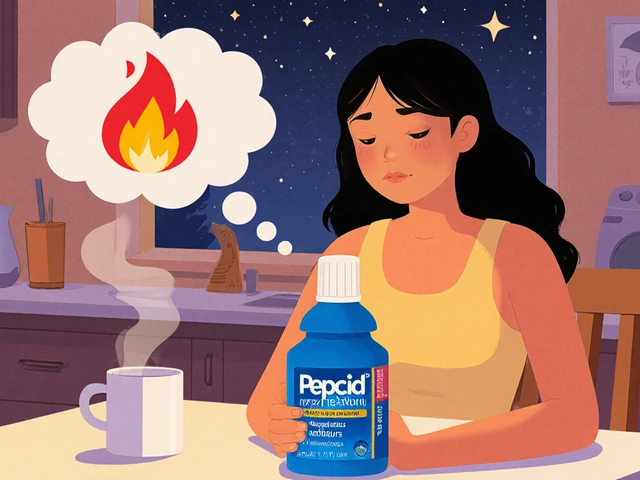Antidepressants: What to Know Before You Start
Antidepressants help many people feel better, but they work differently and come with trade-offs. If you or someone you care about is thinking about medication, this page lays out the basics in plain language—how the main types work, what side effects to expect, and simple safety steps you can use right away.
Types and how they work
Most antidepressants fit into a few groups. SSRIs (like sertraline or fluoxetine) increase serotonin and are usually first-line because they’re easier to tolerate. SNRIs (venlafaxine, duloxetine) boost serotonin and norepinephrine and can help pain as well as mood. Tricyclics and MAOIs are older drugs that still work for some people but need more monitoring. Then there are atypical antidepressants (bupropion, mirtazapine) that target other brain chemicals. Expect 4–6 weeks to notice real change; early effects (sleep, appetite) may show up sooner.
Side effects vary by drug: nausea, sleep changes, and sexual side effects are common with SSRIs. Bupropion is less likely to cause sexual problems but can raise anxiety or risk of seizures in certain cases. Weight gain shows up with some meds like mirtazapine. If side effects start, don’t stop abruptly—talk to your prescriber about dose changes or switching drugs.
Practical safety tips and when to call for help
Start low and go slow. Keep a short symptom diary for the first 8 weeks—note mood, sleep, appetite, and any odd thoughts. If you’re under 25, the risk of suicidal thoughts can briefly rise when a medicine first starts; check in with your prescriber and someone you trust. If you have heart disease, seizures, or are pregnant, say so—some antidepressants need caution.
Watch drug interactions. Don’t mix MAOIs with SSRIs or certain migraine drugs—this can cause serotonin syndrome (high heart rate, fever, confusion). St. John’s Wort can make SSRIs unsafe. Ask your pharmacist about interactions with blood thinners, heart meds, or over-the-counter supplements. If you buy meds online, stick to reputable pharmacies and keep prescriptions; our site covers safe pharmacy tips if you need guidance.
Stopping medication often causes withdrawal-like symptoms: dizziness, flu-like feelings, irritability, or return of mood symptoms. Taper gradually under medical supervision. Combine medication with therapy—CBT and regular exercise show strong, reliable benefits, especially for mild to moderate depression. Small lifestyle steps like consistent sleep, sunlight, and movement make a real difference alongside meds.
If you’re unsure what’s right, ask for a clear plan: expected timeline, how side effects will be managed, and a follow-up in 2–4 weeks. Good care is teamwork—you, your prescriber, and your pharmacist. Want more specific reads? We have guides on related meds, interactions, and safe online pharmacies to help you make informed choices.
17
8 Alternatives to Duloxetine: What Works, What Doesn’t, and What to Watch Out For
Searching for a Duloxetine alternative? This article breaks down 8 real options for people dealing with depression, anxiety, or chronic pain. Get the pros, cons, and unique facts about each alternative—no sugarcoating, just practical info. Learn which drugs might fit your life better and what to expect if you switch. If you're curious about side effects, effectiveness, or weird insurance hoops, you'll find the details here.
31
Exploring Alternatives to Wellbutrin Sr: Options for Mood Management
Navigating the landscape of antidepressants can be overwhelming, especially when seeking alternatives to Wellbutrin Sr. This article delves into viable options such as Lexapro, highlighting their strengths and potential drawbacks. Understand the nuances of each alternative to make informed decisions about mood management. Explore options that range from SSRIs to newer medications designed with fewer side effects. Discover whether another solution might be a better fit for your specific needs.
Latest Posts
Popular Posts
-
 Medication-Induced Drowsiness: What Causes It and How to Manage It
Medication-Induced Drowsiness: What Causes It and How to Manage It
-
 Over-the-Counter Medication Safety: Hidden Ingredients and Interactions You Can't Afford to Ignore
Over-the-Counter Medication Safety: Hidden Ingredients and Interactions You Can't Afford to Ignore
-
 Pharmacist Recommendations: When to Suggest Authorized Generics
Pharmacist Recommendations: When to Suggest Authorized Generics
-
 Tricyclic Antidepressant Side Effects: Amitriptyline, Nortriptyline, and Other TCAs Explained
Tricyclic Antidepressant Side Effects: Amitriptyline, Nortriptyline, and Other TCAs Explained
-
 Shift Work Sleep Disorder: How to Manage Night Shifts and Get Real Sleep
Shift Work Sleep Disorder: How to Manage Night Shifts and Get Real Sleep



